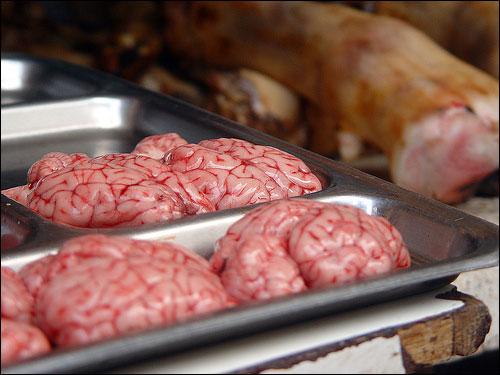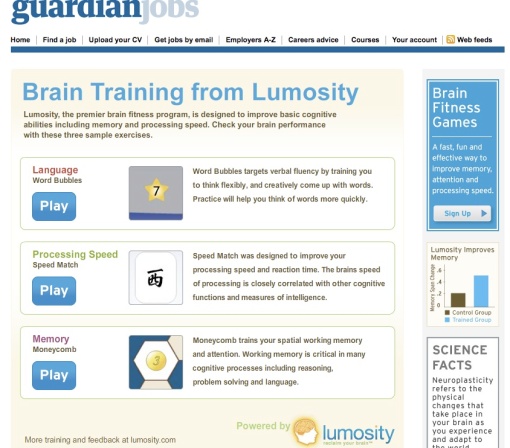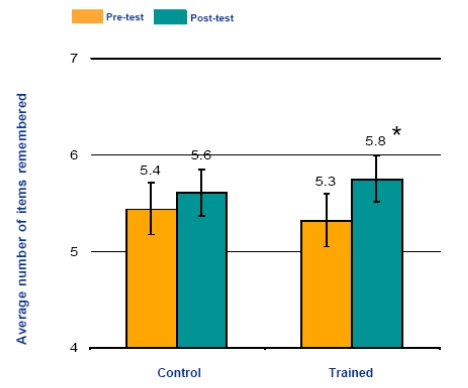8 min 22 sec

"I'm always by profession a skeptic," says , a professor of medicine and psychiatry at the University of California, Los Angeles. "But I do believe that our gut microbes affect what goes on in our brains."
Mayer thinks the bacteria in our digestive systems may help mold brain structure as we're growing up, and possibly influence our moods, behavior and feelings when we're adults. "It opens up a completely new way of looking at brain function and health and disease," he says.
So Mayer is working on just that, doing MRI scans to look at the brains of thousands of volunteers and then comparing brain structure to the types of bacteria in their guts. He thinks he already has the first clues of a connection, from an analysis of about 60 volunteers.
Mayer found that the connections between brain regions differed depending on which species of bacteria dominated a person's gut. That suggests that the specific mix of microbes in our guts might help determine what kinds of brains we have — how our brain circuits develop and how they're wired.
But other researchers have been trying to figure out a possible connection by looking at gut microbes in mice. There they've found changes in both brain chemistry and behavior. One experiment involved replacing the gut bacteria of anxious mice with bacteria from fearless mice.
"The mice became less anxious, more gregarious," says of McMaster University in Hamilton, Ontario, who led a team that conducted the .
It worked the other way around, too — bold mice became timid when they got the microbes of anxious ones. And aggressive mice calmed down when the scientists altered their microbes by changing their diet, feeding them probiotics or dosing them with antibiotics.

Scientists also have been working on a really obvious question — how the gut microbes could .
A big nerve known as the vagus nerve, which runs all the way from the brain to the abdomen, was a prime suspect. And when researchers in Ireland cut the vagus nerve in mice, they no longer saw the to changes in the gut.
"The vagus nerve is the highway of communication between what's going on in the gut and what's going on in the brain," says of the University College Cork in Ireland, who has collaborated with Collins.
Gut microbes may also communicate with the brain in other ways, scientists say, by modulating the immune system or by producing their own versions of neurotransmitters.
"I'm actually seeing new neurochemicals that have not been described before being produced by certain bacteria," says of the Texas Tech University Health Sciences Center in Abilene, who studies how microbes affect the endocrine system. "These bacteria are, in effect, mind-altering microorganisms."
This research raises the possibility that scientists could someday create drugs that mimic the signals being sent from the gut to the brain, or just give people the good bacteria — probiotics — to prevent or treat problems involving the brain.

One group of scientists has tested mice that have behaviors similar to some of the symptoms of autism in humans. The idea is that the probiotics might correct problems the animals have with their gastrointestinal systems — problems that many autistic children also have.
In the mice, many of their autism behaviors were no longer present or strongly ameliorated with probiotics, says at the California Institute of Technology in Pasadena, Calif. His research will be soon in the journal Cell.
Experiments to test whether changing gut microbes in humans could affect the brain are only just beginning.
One team of researchers in Baltimore is testing a probiotic to see if it can help prevent relapses of mania among patients suffering from bipolar disorder.
"The idea is that these probiotic treatments may alter what we call the microbiome and then may contribute to an improvement of psychiatric symptoms," says , director of psychology at the Sheppard Pratt Health System.
"It makes perfect sense to me," says Leah, a study participant who has been diagnosed with bipolar disorder. She agreed to talk with NPR if we agreed not to use her full name. "Your brain is just another organ. It's definitely affected by what goes on in the rest of your body."
It's far too soon to know whether the probiotic has any effect, but Leah suspects it might. "I'm doing really well," she says. "I'm about to graduate college, and I'm doing everything right."
Mayer also has been studying the effects of probiotics on the brain in humans. Along with his colleague Kirsten Tillisch, Mayer gave healthy women yogurt containing a probiotic and then scanned their brains. He found subtle signs that the brain circuits involved in anxiety were less reactive, according to a published in the journal Gastroenterology.
But Mayer and others stress that a lot more work will be needed to know whether that probiotic — or any others — really could help people feel less anxious or help solve other problems involving the brain. He says, "We're really in the early stages."
249 comments 234










 Male sex hormones surge in the brain after exercise and could be helping to remodel the mind.
Male sex hormones surge in the brain after exercise and could be helping to remodel the mind.




